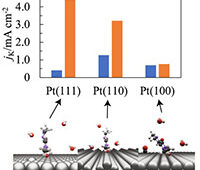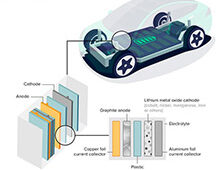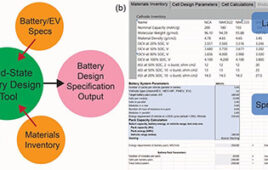
ORNL researchers coupled a thin-film cathode with a solid electrolyte to rapidly determine the cause of charge loss in higher voltage lithium-ion batteries, a key finding for designing high capacity, high voltage cathodes in solid-state batteries. Credit: Nathan Phillip/ORNL, U.S. Dept. of Energy
Oak Ridge National Laboratory scientists seeking the source of charge loss in lithium-ion batteries demonstrated that coupling a thin-film cathode with a solid electrolyte is a rapid way to determine the root cause.
In a study, researchers prepared a lithium nickel manganese cobalt oxide cathode as dense, thin-films free from binders and additives. The cathode’s charging and discharging cycles were compared in cells with a standard liquid electrolyte versus a sputtered-deposited solid electrolyte. The capacity of both cells faded quickly and, within a few cycles, the cathode showed physical instability.
Further analysis confirmed that resistance at the cathode interface with the liquid electrolyte grows with cycling leading to charge capacity loss while the solid electrolyte was stable.
“Charge loss was related to the inherent structural instability of the cathode’s crystalline structure, a key finding for designing high capacity, high voltage cathodes in solid state batteries,” ORNL’s Gabriel Veith said.





Tell Us What You Think!